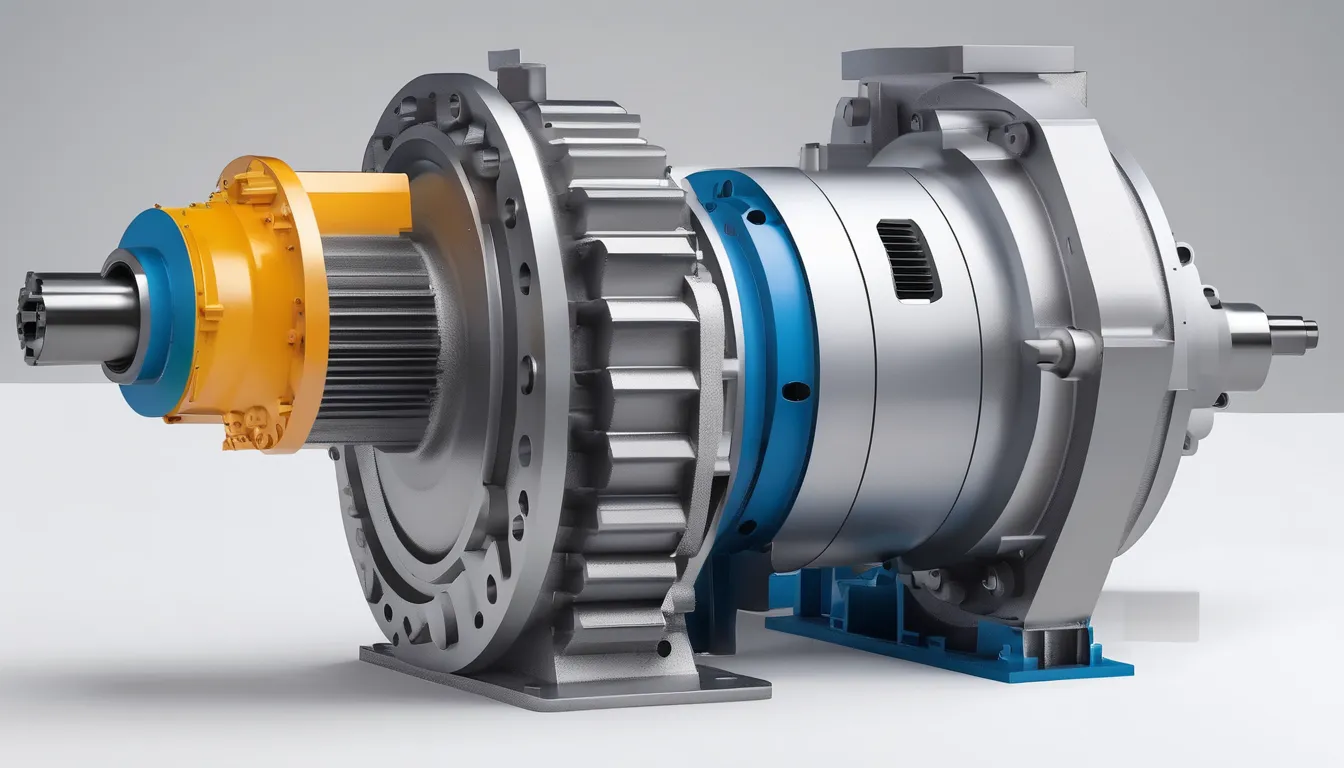Selecting the Right Gear Drive for Industrial Applications

When you’re tasked with selecting the right gear drive for your industrial application, it’s essential to consider multiple factors that can impact performance. You’ll want to assess torque and load requirements, as well as the space constraints of your machinery. Each gear type—spur, helical, bevel, or worm—has its advantages and limitations that could significantly affect efficiency and longevity. Understanding these elements can lead you to make informed decisions, but there’s more to consider that could change the outcome. What’s the next step in optimizing your gear drive choice? gearbox manufacturer.
Understanding Gear Drive Types
When it comes to selecting the right gear drive, understanding the different types available is crucial. You’ve got several options to consider, each designed for specific applications.
The most common types include spur, helical, bevel, and worm gear drives.
Spur gears are straightforward and efficient, featuring teeth that align parallel to the axis of rotation. They’re ideal for applications requiring high speed and low torque.
Helical gears, on the other hand, have angled teeth, which allows for smoother and quieter operation. They’re great for higher load capacities and can handle more torque than spur gears.
Bevel gears are unique because they allow for the transfer of power between shafts that are at right angles to each other. This makes them perfect for applications where space is limited.
Lastly, worm gears offer a high reduction ratio and are excellent for situations where you need to reduce speed while increasing torque.
Assessing Torque and Load Requirements
Selecting the right gear drive involves a careful assessment of torque and load requirements to ensure optimal performance.
You’ll need to start by determining the maximum torque your application will encounter. This is crucial because selecting a gear drive that can’t handle the required torque can lead to premature failure or underperformance.
Next, consider the type of load: is it constant, variable, or shock loading? Knowing this helps you choose a gear drive that can accommodate those conditions effectively. For instance, if your application involves frequent starts and stops, a gear drive designed for high shock loads will be essential.
You should also evaluate the duty cycle of your application. Continuous duty operations require different gear drive specifications compared to intermittent ones.
Don’t forget to factor in safety margins; it’s wise to select a gear drive that exceeds your calculated requirements to account for unexpected loads or wear over time.
Evaluating Space and Size Constraints
Many applications face limitations in space and size, making it essential to evaluate these constraints early in the selection process for a gear drive. You’ll want to measure the available space in your setup accurately, as every inch counts. Consider the dimensions not just of the gear drive itself but also of surrounding components like motors, frames, and other machinery.
It’s crucial to assess both the footprint and the height of the gear drive since these factors can significantly impact installation and maintenance. If you’re working in tight quarters, opting for a compact design can make a big difference.
Also, think about the weight of the gear drive. Heavier units might require additional support structures, which can complicate your design.
Don’t forget about the cooling requirements and accessibility for maintenance. A gear drive that fits perfectly but lacks adequate airflow or is hard to reach for servicing could lead to long-term operational issues.
Considering Speed Ratios
In the realm of gear drive selection, considering speed ratios is crucial for optimizing performance. The right speed ratio not only enhances efficiency but also ensures that your machinery operates smoothly.
You need to determine the appropriate balance between input speed and output speed to achieve your desired operational goals.
When evaluating speed ratios, think about these key factors:
- Application requirements: Different tasks demand specific speeds for optimal results.
- Torque considerations: Higher ratios can increase torque but may reduce speed and vice versa.
- Efficiency needs: A well-chosen speed ratio can minimize energy loss and enhance performance.
- System compatibility: Ensure your gear drive integrates seamlessly with existing equipment.
Maintenance and Durability Factors
When it comes to gear drives, keeping up with maintenance and durability factors is essential for long-term reliability. Regular inspections can help you identify potential issues before they escalate, so make it a habit to check for wear, leaks, and unusual noises.
Scheduling routine maintenance won’t only extend the life of your gear drive but also ensure optimal performance.
You should also consider the operating environment. Exposure to extreme temperatures, dust, or moisture can significantly impact the durability of your gear drive. Use protective covers or choose drives with appropriate sealing to mitigate these risks.
Selecting high-quality materials that resist corrosion and wear can further enhance the lifespan of your equipment.
Don’t underestimate the importance of proper lubrication. Using the right type and amount of lubricant prevents friction and reduces heat, which are crucial for maintaining efficiency.
Always follow the manufacturer’s guidelines for lubricants and service intervals.
Conclusion
In conclusion, selecting the right gear drive for your industrial application is essential for optimal performance. By understanding the different gear types, assessing torque and load requirements, and considering space and speed constraints, you can make an informed choice. Don’t overlook maintenance and durability factors, as they play a crucial role in your equipment’s longevity. By carefully evaluating these aspects, you’ll enhance efficiency and ensure your machinery operates reliably for years to come.
